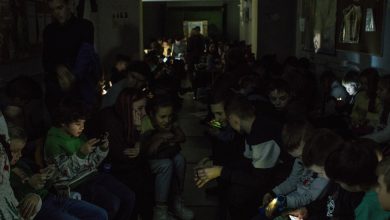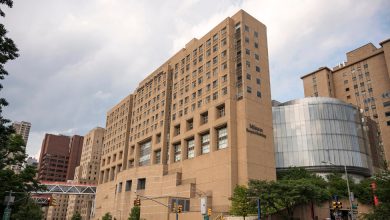Driving Iceland’s Overlooked North

The landscape surrounding the Myvatn Nature Baths seethes. Steam drifts from fissures in volcanic seams and belches from lava tubes. Bubbling mud is ringed in chemical greens and oranges. The baths themselves — broad, chest-deep pools surrounded by porous lava rock — smell of the sulfur that’s said to relax and restore bathers. From a hut with a sliding service window on one edge of the pool, a woolen-clad bartender dispenses tap Gull beer to bathers who hold their pints above the warm water while sinking to their chins.
Tucked in an alcove, my husband, Dave, son, Seth, and I lift our beers high while parsing the graphic, almost violent, nature of Iceland, a place where the Earth seems to split open to reveal its internal organs. As we discuss the rift between the North American and Eurasian tectonic plates that slices through the region, we attract the attention of a Danish couple who drifts toward us. A geologist, he adds that the plates are moving across a hot spot that accounts for the volcanic activity. She rolls her eyes. “I planned a romantic getaway, but all I hear is geology, geology, geology,” she laughs.
That, of course, is the essence of Iceland’s appeal, with its geysers, thundering waterfalls, erupting volcanoes and basalt-backed beaches. Its geology is rarely more naked than along the fault line, which stretches from the Reykjanes Peninsula outside of the country’s capital, Reykjavik, in the southwest to the northeast near the Myvatn baths, nearly halfway around the island.
Visitors have long been drawn to the Golden Circle, a 180-mile ring route that is easily accessible from Reykjavik and takes in three famous sites: Thingvellir National Park, where the daring can dive between tectonic plates; the Strokkur geyser at Geysir, a geothermal area that gave its name, albeit with a different spelling, to all other erupting water features; and the cascading Gullfoss waterfall. Throw in a soak in the Blue Lagoon hot springs and you’ve got Iceland’s iconic tour.
But for those seeking to get off the beaten Circle, North Iceland offers an analogous, lesser-traveled route known as the Diamond Circle. Near the North’s unofficial capital, Akureyri, the 150-mile route visits Dettifoss, said to be the most powerful waterfall in Europe; the horseshoe-shaped canyon of Asbyrgi in Vatnajokull National Park; the whale-watching village of Husavik; and the volcanic craters, lava fields and hot springs surrounding Lake Myvatn.
“The vast majority of people who go to Iceland see the Golden Circle, stay in Reykjavik and then go home, but I think some of the most beautiful highlights of Iceland are quite far from Reykjavik,” said Emmanuel Burgio, the founder of Blue Parallel, a tour company that recently began offering custom trips in Iceland. He described North Iceland as “dramatic, with steep mountains that fall into the ocean,” noting that the trouble is getting there, requiring a domestic flight or a long drive. We opted for the latter.
Heading north
Last October, when Iceland still had a vaccine requirement and high vaccination rate (it has since dropped Covid-related entry restrictions), we spent 10 days road-tripping around the island, sharing uncrowded hiking paths and hot springs with similarly adventurous Europeans. They, too, were apparently willing to trade better weather — October temperatures peak around 45 degrees and our volatile span delivered a mix of sun and rain, and one snowstorm — for empty roads and less crowded sites.
At the international airport near Reykjavik we rented a manual SUV and followed the Ring Road, or Route 1, the famous 820-mile perimeter route that circles the country, offering access to the Golden Circle in the south and Diamond Circle in the north, both mini loops tangential to the main coastal one.
We chose the land route in order to see more, but found driving in Iceland — a windswept island smaller than Ohio that borders the Arctic Circle — challenging. Its perils, which include ice and high winds, are suggested by the color-coded SafeTravel road map (found online and at gas stations and tourist attractions), which is updated regularly. Even when the Ring Road is green for go, rugged lava fields often squeeze its two shoulderless lanes. Such challenges explain why guidebooks suggest setting aside 10 days for the drive, with stops in places like the Lava Center museum in southern Hvolsvollur and the iceberg-filled Jokulsarlon lagoon.
Sightseeing en route, we took four days to reach North Iceland from the east, crossing mountains where snow was falling on roads color-coded blue for ice. Losing track of the number of waterfalls spouting from volcanic cliffs, and gorges cut by tumbling rivers, we were ready for the break that is the Diamond Circle, a handy detour from the Ring Road that connects North Iceland’s marquee attractions.
Circle of fire
While much of North Iceland sprawls across a series of fjord-cut peninsulas along a sparsely populated coast peppered with farms and pastures grazed by sturdy Icelandic horses, the Diamond Circle largely explores its volcanic interior.
The Diamond and Ring routes overlap near Lake Myvatn, where the dark landscape of lava rock and volcanic craters looked only recently cooled. Parking at the base of the Hverfjall crater, which looms over the east side of the lake, we began our ascent up the side, a short but taxing climb over loose rock to the roughly 1,300-foot-tall rim where winds nearly sheared us from the ridge.
The otherworldly panorama kept us riveted. Dramatically ringed with volcanic craters, peaks and lava fields, the Myvatn area owes much of its current geothermal activity to a nearby volcanic region named Krafla, where another steep hike led to the green crater lake called Viti. Downhill from Viti, the landscape belches audible steam blasts from a fumarole at Hverir, a misty, moody landscape with hiking paths that go past scalding ponds not far from the warm Myvatn Nature Baths, where we recovered from our hikes and talked geology with the Danish couple.
A popular spot in the north, Lake Myvatn is home to chic Scandinavian hotels (Icelandair Hotel Myvatn and Fosshotel Myvatn) and more modest guesthouses reached by roads occasionally clogged with sheep. The water in our lakeside cabin at Dimmuborgir Guesthouse smelled strongly of sulfur, but signs in English noted that it was not only safe, but good for us.
A short distance down the rocky lake shore, the sheep parted, allowing us to drive on to Vogafjos, a farm-based resort with a restaurant in a working cowshed. Though its polished wooden tables were set with votive candles and the overall impression was clean, Vogafjos, unsurprisingly, smelled like a barnyard. Like us, most diners dismissed the odor for the delight of seeing dairy cows behind the window separating the dining room from the livestock stalls, and were further diverted by creamy housemade mozzarella, local lamb carpaccio and Geysir bread, a kind of rye bread cooked in an underground oven.
The water circuit
Leaving the lake the next day, we set out to explore the northern roads of the Diamond Circle, heading first for Dettifoss falls.
As Gullfoss waterfall is to the Golden Circle, Dettifoss is to the Diamond. With a 330-foot-wide pounding curtain of water, Europe’s most powerful falls sprayed the extensive gorge-side viewing platforms and walkways, icing the paths.
Travel Trends That Will Define 2022
Looking ahead. As governments across the world loosen coronavirus restrictions, the travel industry hopes this will be the year that travel comes roaring back. Here is what to expect:
Air travel. Many more passengers are expected to fly compared to last year, but you’ll still need to check the latest entry requirements if you’re traveling abroad.
Lodging. During the pandemic, many travelers discovered the privacy offered by rental residences. Hotels hope to compete again by offering stylish extended-stay properties, sustainable options, rooftop bars and co-working spaces.
Rental cars. Travelers can expect higher prices, and older cars with high mileage, since companies still haven’t been able to expand their fleets. Seeking an alternative? Car-sharing platforms might be a more affordable option.
Cruises. Despite a bumpy start to the year, thanks to Omicron’s surge, demand for cruises remains high. Luxury expedition voyages are particularly appealing right now, because they typically sail on smaller ships and steer away from crowded destinations.
Destinations. Cities are officially back: Travelers are eager to dive into the sights, bites and sounds of a metropolis like Paris or New York. For a more relaxing time, some resorts in the U.S. are pioneering an almost all-inclusive model that takes the guesswork out of planning a vacation.
Experiences. Travel options centered around sexual wellness (think couples retreats and beachfront sessions with intimacy coaches) are growing popular. Trips with an educational bent, meanwhile, are increasingly sought after by families with children.
Both Dettifoss and our next destination, Asbyrgi, 20 miles north, are part of the northern branch of Vatnajokull National Park, which includes much more inaccessible wilderness, including the Vatnajokull ice cap in southeast Iceland.
The elliptical canyon was made, according to Norse mythology, by the god Odin’s eight-legged flying horse, who left a hoof print on earth. It’s an apt setting for otherworldly legends. The mossy forest surrounding a spring-fed lake at the end of the canyon seemed a fitting home for the “huldufolk” or hidden people that many Icelanders believe live here.
From the canyon, the Diamond route continues about 15 miles northwest to the Tjornes Peninsula, skirting fossilized sea cliffs and turning south at Skjalfandi Bay toward Husavik, the oldest settlement in Iceland and, more recently, the whale-watching capital of the country. A wooden church built in 1907 overlooks its protected harbor, filled with tall-masted wooden ships and fishing trawlers, many now run by whale-watching companies. Facing the harbor, the comprehensive Husavik Whale Museum exhibits many of the species that sailors may see, including an 82-foot-long blue whale skeleton.
Rough seas cancelled boat launches that day, and we settled for scanning the horizon for the telltale blowhole sprays of humpback whales from the modern cliff-top Geosea spa just north of Husavik. The spa channels geothermally heated seawater into pools and, like so many baths in Iceland that cater to tourists, has a wade-up bar.
We spent our last morning in the north hiking the jagged Dimmuborgir lava field near our cabin with its castle-like volcanic rock formations — occupied by trolls, according to signage — before leaving Lake Myvatn. Rejoining the Ring Road, we closed the Diamond loop at Godafoss, another jaw-dropping plunge loaded with legends. Here, when the island converted to Christianity around the year 1000, Iceland’s leader is said to have thrown all his pagan idols into the churning pool created by the semi-circular drop of the Skjalfandafljot river. The betrayal so angered the gods that they split the falls in two.
Though the powerful plunge suggests staying more than hurling-distance away, the no-dumping taboo remains in place, according to a local shopkeeper, who cautioned visitors against similarly throwing anything in the river, lest they hit the huldufolk.
Elaine Glusac writes the Frugal Traveler column. Follow her on Instagram @eglusac.
Follow New York Times Travel on Instagram, Twitter and Facebook. And sign up for our weekly Travel Dispatch newsletter to receive expert tips on traveling smarter and inspiration for your next vacation. Dreaming up a future getaway or just armchair traveling? Check out our 52 Places for a Changed World for 2022.





